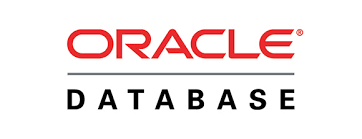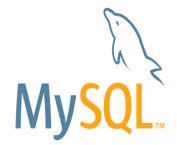

Author: Hassan Shareef,
Database Administrator
Since 16 years
When converting data from Oracle to MySQL, we need to map the Oracle table column data types to their equivalent data types in MySQL. While most the datatypes can be mapped directly because their behavior is same in both the databases, but for some datatypes we need to choose the nearest one as their direct equivalent datatype is not available in MySQL. Some examples are NUMBER, BLOB, CLOB etc.
When migrating data between Oracle and MySQL, it's essential to understand how Oracle data types correspond to MySQL data types to prevent data loss, truncation, or compatibility issues.
Oracle and MySQL use different sets of data types for storing numbers, strings, dates, and other values. Here is the comparison of these data types.


Planning to Migrate data between Oracle database to MySQL. Then download and use Data Loader and achieve migration in just few clicks. Free Download Now
Numeric data types are used to store numerical values, including integers and floating-point numbers.
| Oracle Data Type | MySQL Equivalent | Remarks |
|---|---|---|
| NUMBER(p,s) | DECIMAL(p,s) or NUMERIC(p,s) | Same precision and scale handling in both databases. |
| NUMBER(p) | DECIMAL(p,0) or BIGINT | If no scale is given, it is treated as an integer. |
| NUMBER (without p,s) | DOUBLE or DECIMAL | Oracle’s flexible NUMBER type has no direct equivalent in MySQL. Consider DECIMAL for exact values and DOUBLE for floating points. |
| BINARY_FLOAT | FLOAT | Single-precision floating point. |
| BINARY_DOUBLE | DOUBLE | Double-precision floating point. |
| FLOAT(p) | FLOAT(p) or DOUBLE | In Oracle, FLOAT(p) is an alias for NUMBER(p,-127). MySQL uses FLOAT for precision ≤ 24 and DOUBLE for precision > 24. |
| INTEGER / INT | INT | Equivalent in both databases. |
| SMALLINT | SMALLINT | Equivalent in both databases. |
| BIGINT | BIGINT | Equivalent in both databases. |
String data types store character-based data.
| Oracle Data Type | MySQL Equivalent | Remarks |
|---|---|---|
| CHAR(n) | CHAR(n) | Fixed-length character string. |
| VARCHAR2(n) | VARCHAR(n) | Variable-length character string. |
| NCHAR(n) | CHAR(n) CHARACTER SET utf8mb4 | National character type for Unicode support. |
| NVARCHAR2(n) | VARCHAR(n) CHARACTER SET utf8mb4 | National character type for Unicode support. |
| CLOB | TEXT or LONGTEXT | Oracle’s CLOB is for large text storage; MySQL uses TEXT types. |
| NCLOB | TEXT CHARACTER SET utf8mb4` | Unicode equivalent of CLOB. |
| LONG | TEXT or LONGTEXT | LONG is deprecated in Oracle; use TEXT in MySQL. |
| RAW(n) | VARBINARY(n) | Binary data storage. |
| LONG RAW | BLOB | Large binary object storage. |
Oracle and MySQL store date and time data differently.
| Oracle Data Type | MySQL Equivalent | Remarks |
|---|---|---|
| DATE | DATETIME | Oracle’s DATE includes time; MySQL’s DATE does not. Use DATETIME for full equivalence. |
| TIMESTAMP | TIMESTAMP | Stores date and time with fractional seconds. |
| TIMESTAMP WITH TIME ZONE | TIMESTAMP + CONVERT_TZ() | MySQL does not support time zones in timestamps natively. Use CONVERT_TZ(). |
| TIMESTAMP WITH LOCAL TIME ZONE | TIMESTAMP | Time zone is stored per session in Oracle but not in MySQL. |
LOB types are used for large data storage.
| Oracle Data Type | MySQL Equivalent | Remarks |
|---|---|---|
| BLOB | BLOB | Equivalent. |
| CLOB | TEXT | Equivalent for text-based large storage. |
| NCLOB | TEXT CHARACTER SET utf8mb4 | Unicode large text storage. |
| Oracle Data Type | MySQL Equivalent | Remarks |
|---|---|---|
| ROWID | No direct equivalent | Unique row identifier in Oracle. |
| UROWID | No direct equivalent | Universal row identifier. |
| XMLTYPE | TEXT or JSON | Oracle’s XML storage can be handled using TEXT or JSON in MySQL. |
In Oracle, auto-increment behavior is handled using sequences, whereas MySQL provides AUTO_INCREMENT.
CREATE SEQUENCE my_seq START WITH 1 INCREMENT BY 1; CREATE TABLE my_table ( id NUMBER PRIMARY KEY DEFAULT my_seq.NEXTVAL );
CREATE TABLE my_table ( id INT AUTO_INCREMENT PRIMARY KEY );
When migrating data between Oracle and MySQL, careful data type mapping is crucial to avoid truncation, performance degradation, or compatibility issues. Use tools like, Data Loader, Oracle SQL Developer, MySQL Workbench, or custom scripts to automate and validate conversions.